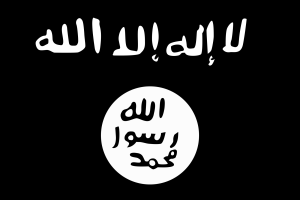This analysis is conducted as part of the Son of Media Safety & Security’s Project on War and Foreign Terrorist Organizations (FTOs). Learn more here.
al-Qa’ida in the Arabian Peninsula (AQAP)
Following the disruptions caused to al-Qa’ida (AQ) by American and ally operations, elements of AQ were nearly dissolved in Saudi Arabia and Yemen. However, today the AQ affiliate in the region known as the Arabian Peninsula (AP), which houses nations such as Yemen and Saudi Arabia, are considered to be the most active globally. The resurgence of AQAP began firstly with the emergence of the group designated as AQY or al-Qa’ida in Yemen.
In February of 2006 twenty three AQ members, among them Nasir al-Wahishi, executed a successful escape from the prison detaining them in Yemen’s capital city of Sana’a. These AQ members who had managed to tunnel their way out of detention formed the Yemeni affiliate of AQ, known as AQY. Shortly thereafter, in February of 2006, AQY launched attacks against Yemeni oil facilities.
AQY attacks continued against foreign tourists, Yemeni government institutions and embassies of western nations. Examples of attacks included:
- 2007 suicide attack against Spanish tourists
- 2008 suicide attack against foreign tourists, mortar attacks on American and Italian embassy compounds in Sana’a, attacks on the Yemeni presidential compound
- In September of 2008, two vehicle bombs detonated outside the American embassy in Sana’a and kill nineteen, including six terrorists
Around this time, Saudi Arabian officials were having more success than their Yemeni counterparts with battling AQ elements. Unpredictably this success would lead to the creation of AQAP as many Saudi AQ elements fled or were driven into Yemen. In January of 2009, it was announced that Yemeni and Saudi AQ members would unite under one banner.
Under this new banner, AQAP was designated and its activities include:
- 03/2009: Suicide bomb attack against South Korean tourists in Yemen
- 08/2009: Failed assassination attempt on Saudi Prince Muhammad bin Nayif
- 11/2009: Inspiring U.S. Army Major Nidal Malik Hasan inspired to go on a shooting rampage at the Fort Hood, kills thirteen.
- 12/2009: Failed attack on Northwest Airline flight from Amsterdam to Detroit. Carried out by Nigerian-born Ulmar Farouk Abdulmuttalab using an “underwear bomb”
- 01/2010: U.S. Department of State designates AQAP as an FTO
- 04/2010: Failed attack on British ambassador
- 10/2010: Failed attack on U.S. using explosive laden packages hidden in printer ink cartridges
- 02/2012: Car bombing in Hadramawt that killed twenty-six Yemeni soldiers
- 05/2012: Suicide bomb attack in Sanaa, killed 96
- 10/2012, U.S. Department of State amends AQAP’s FTO designation to include Ansar al-Shari’a (AAS)
- 01/2015: AQAP claims responsibility for orchestrating Charlie Hebdo staff shooting
It is important to note that prior to 2003, AQ in the nations of the Arabian Peninsula were active and made up of members who had returned from jihad in Afghanistan. They were led by leader Abu Ali al-Harithi, killed by UAV strike in 2002. The original group’s activities included attacks on the U.S.S. Cole.
Leadership
- Nasir al-Wahishi (Wuhayshi): Designated as “amir” or commander is the top leader of AQAP, in charge of approving targets, recruiting, allocating resources, tasking attacks
- Said al-Shihri (Shahri): Deputy, now deceased, former inmate at Guantanamo Bay
- Anwar al-Aulaqi (Awlaki): Deceased 9/30/2011, Dual U.S. Yemeni citizen, head of external operations
- Qasim al-Rimi: Sr. Military Commander
- Ibrahim al-Asiri: bomb maker
- Samir Khan: Deceased, 9/30/2011, publisher of Inspire Magazine
Goals Overtly Declared
- Establishment of a caliphate in the Arabian Peninsula and wider Middle East
- Establishment of Shari’a Law
- Removing Western Influence
Membership (Estimated/Approximate)
- 1,000
Base of Operations
- Yemen
Funding Sources
- Robberies
- Kidnapping Ransoms
- Donations from supporters (reportedly to a lesser extent)
Marketing Vehicles
- Sada al-Malahim (the Echo of Battle), an Arabic language online publication
- Inspire Magazine, an English language online publication, established 2010
- al-Madad News Agency, an Arabic language television network, established 2011
Also Known As (AKA)
- al-Qa’ida in the South Arabian Peninsula
- al-Qa’ida in Yemen (AQY)
- al-Qa’ida of Jihad Organization in the Arabian Peninsula
- al-Qa’ida Organization in the Arabian Peninsula
- Tanzim Qa’idat al-Jihad fi Jazirat al-Arab
- Ansar al-Shari’a (AAS)


